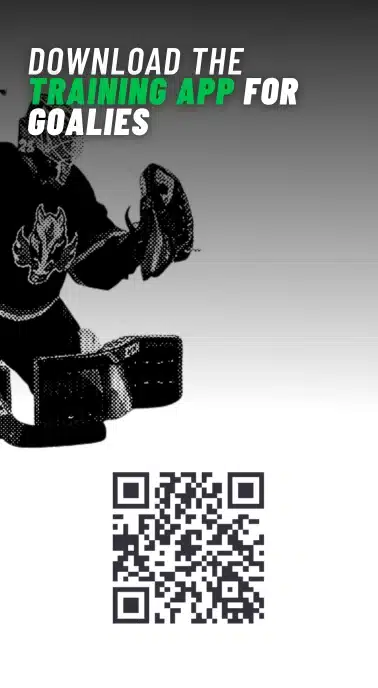For goalies, improving your post-game or practice recovery through stretching, hip mobility exercises, and Myofascial Release training is of the utmost importance.
Myofascial Release Therapy for Goalies
Why does myofascial release apply to athletes?
Is there something I should be doing about it?
These are all questions we get asked about on a near daily basis.
What is myofascial release?
Myofascial Release is a practice that can be done by yourself, using just a foam roller and a lacrosse ball. It is a hands on, effective, and safe method of eliminating pain in muscle tissue. Simply put, to do self MR, you apply bearable yet sustained pressure to myofascial connective tissue (muscle groups) over a period of time.
Please note, this myofascial release guide is meant to answer questions you may have. We are not a group of doctors and you should seek medical attention for serious or on-going issues you may be experiencing.
With that being said, myofascial release is a technique that virtually anybody can perform themselves using a few basic tools. For a complete guide on that, read the post we’ve linked up below.
See: How To Do Self Myofascial Release
What are the benefits of Myofascial Release?
The ultimate goal of the technique is to restore motion to a muscle by loosening the fascia in certain areas of your body. Fascia in one portion of your body that is bound too tightly can actually affect other areas, leading to increased risk injury or injury itself. In fact, the fascia system involves every cell in your entire body.
That’s not to say if you aren’t consistently practicing self MFR after a workout that you’re going to get injured. The thought here is that by incorporating some type of MFR into your post workout recovery, it can help restore motion and increase muscle recovery time thereby reducing your chance of injury.
This video, originally published by Richard Hardy on YouTube, does a phenomenal job of explaining the concept of myofascial release.
- Helps decrease pain, especially in athletes
- Promotes quicker healing of muscle groups (think, after a workout)
- Increased motion in muscle groups
- Better overall flexibility
- Helps improve recovery by increasing blood flow
Understanding Myofascial Release
First and foremost, the concept of myofascial release is not a new buzzword in the industry. It’s not something created just to sell more of a certain type of product.
The technique involves a lot of science and with a serving of “see for your self” results.
To put the practice in it’s simplest form, myofascial release happens when you apply pressure to a certain muscle group over a sustained period of time. Not too much, not too little. For doing MFR yourself, there are plenty of beginner foam rollers that are a little less sturdy.
Add to the fact that athletes by the thousands swear by it, it’s not a new concept, and doctors recommend it, you’ve got a practice that must mean something.
There are many fly by night, “one fix” techniques out there in the world of recovery. Myofascial Release is not one of them.
Can I do self Myofascial Release (self MFR)?
Absolutely!
And once you’ve got a basic idea of what to do vs. what not to do, we recommend it.
Self MFR is an excellent way of helping build a post workout routine that promotes healthy recovery. It should be noted that sustained, moderate pressure is critical to self MFR. On top of this, you should take great care not to overdo it by applying too much pressure as this can negatively affect the fascia you’re targeting.
Self MFR vs. Visiting a Doctor
If you’re experiencing severe, chronic pain, it’s critical that you seek professional medical attention. Our goal with this article is to put an important topic for proper muscle hearing into layman’s terms that everybody can understanding.
You should always consult a medical professional prior to attempting any technique on yourself or others (and we don’t recommend anything other than foam rolling or a lacrosse ball, sticking to large muscle groups like your legs). If you’ve got pain in areas like your neck, back, upper body, you should consider getting professional medical care.
John F. Barnes is a leading authority on Myofascial Release. His methods may differ from self MFR such as foam rolling and would likely be similar to what you may experience with a physical therapist.
In addition, his book “Myofascial Release: The Search for Excellence” is a must read regarding the topic.
If you’d like to learn how to properly foam roll, check out this post.







